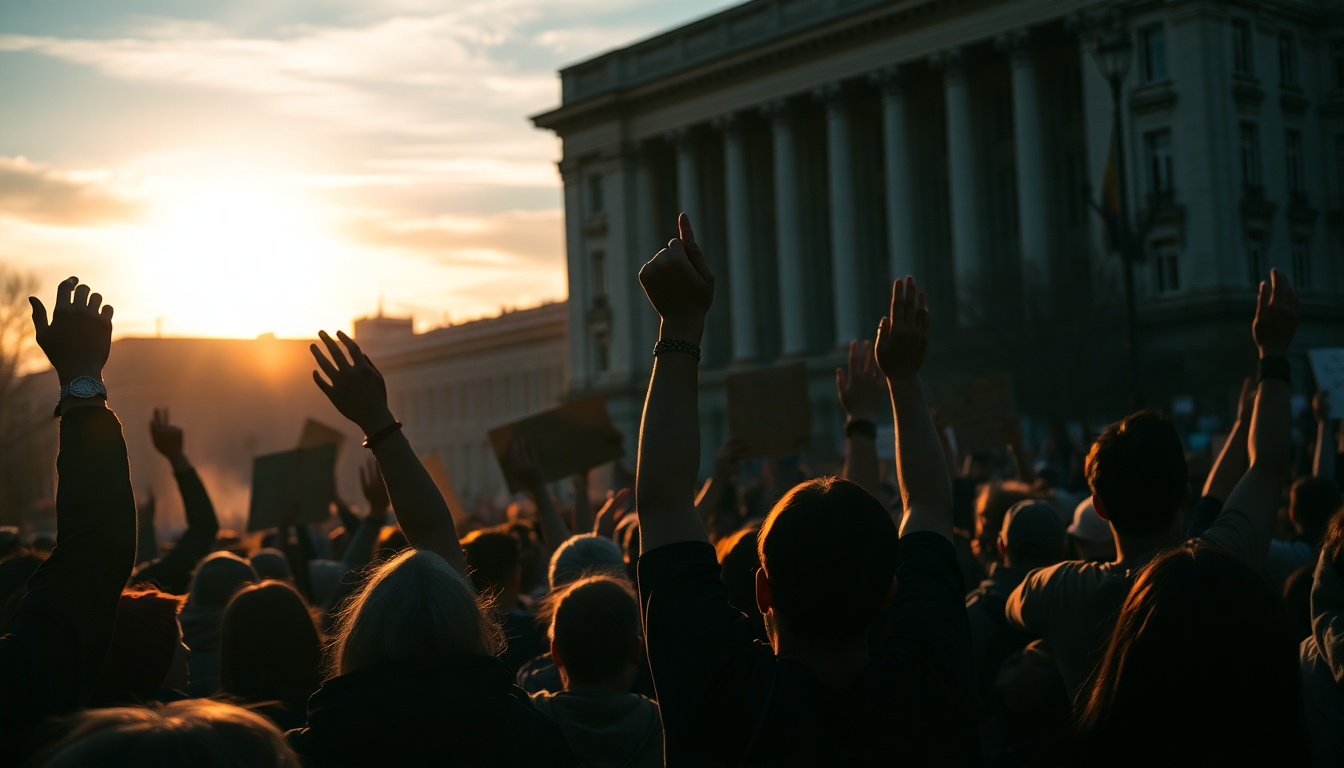Table of Contents
Serbia’s political scene is anything but quiet these days. With a wave of protests sweeping through the streets, a clear message is being sent: change is needed. Tens of thousands of people have gathered in Belgrade, rallying against the populist President Aleksandar Vucic. This remarkable turnout, driven largely by nearly eight months of ongoing demonstrations led by passionate university students, highlights the mounting frustration among citizens regarding the current government’s grip on power.
The Dynamics of the Protests
These protests are more than just isolated events; they signify a widespread call for political reform and accountability. Demonstrators, full of determination, have gathered in central Slavija Square, chanting demands like “We want elections!” This demand for early parliamentary elections reflects a collective desire for a change in governance and a break from the status quo.
The turnout has been significant, with Serbian police estimating around 36,000 participants, while independent monitoring groups suggest numbers could be as high as 140,000. Such discrepancies underscore the intensity of public sentiment against Vucic’s administration and showcase the mobilization of various societal groups, especially students, who have been instrumental in organizing these protests.
However, these gatherings haven’t all been peaceful. There have been clashes with law enforcement, resulting in the use of pepper spray and riot control measures. Interior Minister Ivica Dacic remarked that police were merely trying to restore order, particularly following reports of protesters attacking officers. These confrontations not only escalate tensions but also reveal the fragile balance between public dissent and governmental authority.
Public Sentiment and Government Response
As the protests gain momentum, the government’s response has been anything but reassuring. President Vucic and his Serbian Progressive Party have largely dismissed calls for early elections, suggesting that the demonstrators are merely pawns of foreign interests—a claim that lacks evidence. This narrative seeks to undermine the legitimacy of the protests and portray participants as troublemakers rather than concerned citizens advocating for democratic processes.
Even though there has been a slight decline in protest attendance in recent weeks, the strong turnout at the latest rally shows that the public’s resolve remains steadfast. These protests have evolved into a powerful symbol of the fight for democratic rights and accountability, resonating deeply in a nation that has faced political turmoil for years.
As the protests persist, it’s crucial to keep an eye on how the relationship between the government and citizens develops. Will the calls for change trigger genuine dialogue, or will they be met with increased resistance? The next few months could be pivotal in shaping the future of Serbia’s political landscape.
Looking Ahead: The Future of Serbian Politics
With presidential and parliamentary elections not on the horizon until 2027, Serbia’s path forward remains unclear. The current protests mark a significant chapter in the nation’s story, revealing the power of collective action and the demand for change in governance. The pressing question is whether the government will listen to its citizens or continue down a path of defiance.
As the political climate shifts, it’s essential for observers and analysts to evaluate the impact of these protests on Vucic’s administration and the broader implications for democracy in Serbia. The determination of these protesters indicates that the fight for political reform is far from over, and the coming months may unveil new developments in this ongoing struggle.


